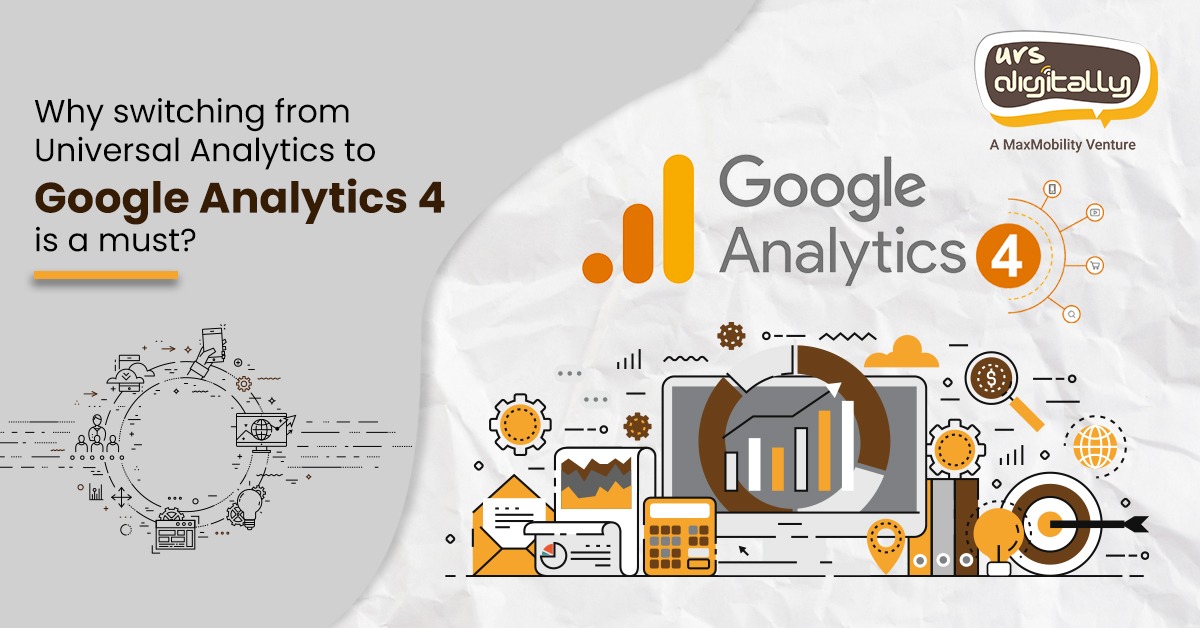Google’s Analytics reporting tool is widely used by businesses and websites to help in tracking the interaction of users across various web domains, apps, etc. Businesses use this platform to keep a track of their website traffic and monitor marketing channels. This is the traditional Universal Analytics that Google offers. But now, as the technology is advancing, it becomes necessary to change the interface and develop a more sophisticated tool that will serve a greater purpose for businesses.
Google recently announced the major shift that is going to happen in the world of analytics. A newer version of Google Analytics will replace the existing Universal Analytics. Although it is already in use, from July 1, 2023, it will be the sole Google Analytics tool. You might be wondering, how it will impact you and your business, so let’s understand what Google Analytics 4 is all about.
What is Google Analytics 4?
Google Analytics 4 or GA4 is a next-generation analytics tool with more privacy control and fewer complications. This service will enable you to measure traffic and engagement across websites and apps.
This revamped analytics tool is programmed with different features than the traditional Universal Analytics tool with X-channel measurement and AI-based predictive data. It has been designed to work not entirely cookie-centric but uses an event-based data model to offer users a complete understanding of the customer journey across various devices.
Before we talk about the new features of the GA4 in detail, let’s understand how it differs from traditional Universal Analytics.
Differences between Universal Analytics and GA4
- The user interface has been redesigned in the new GA4 from Universal Analytics. The latest version is programmed with improved reporting,debug view, engagement metrics, navigation, event, and conversion are among some of the revised add-ons.
- The traditional Universal Analytics features three tiers of data organization, i.e., Account, Property, and View. But now, there are only two tiers, i.e., Account and Property.
- Universal Analytics (UA) highlights Total Users, whereas GA4 focuses on Active Users.
- UA tracks screen views in separate mobile-specific properties, while GA4 combines both the app and web data into the same property.
- GA4 currently does not support additional filters, while UA allows additional filtering options which may impact the result of data.
- UA properties do not estimate the number of sessions, but, GA4 properties use a statistical estimate of the number of sessions that occurred on the website or app by estimating the number of Unique session IDs.
- UA is able to count only one conversion per session, but GA4 can count multiple conversions per session.
- While Universal Analytics is based on cookies, the new Google Analytics 4 has been designed to go cookie-less. This will help in the privacy of user data.
As we proceed further, let’s discuss the advantages and disadvantages of Google Analytics 4, so that you might be able to understand what features or properties can be advantageous for you or not.
Advantages of GA4
- AI-powered insights and predictions- The new insights and predictions in Google Analytics 4 can automatically alert marketers if there is any change in the data trends.
- User data control- With the new GA4 analytics tool, the user data now cannot be used without their consent. Consent mode has been designed for sites that require the advertisers to obtain end-user consent before collecting analytics data.
- Cookie-less analytics- Google Analytics 4 relies on machine learning to acquire the data. It is using machine learning model to provide support to various modes of analysis.
- Deeper audience integration- the marketers will be able to build and maintain audiences across the web as well as the app. Once the audience completes their purchase, their names will automatically be removed from the list so that they won’t be retargeted again with ads.
- Customer lifecycle report- GA4 has brought one of the biggest changes in organizing reports which will focus on the customer’s journey. You will be able to see what channels are driving new customers in the user acquisition reports and then use these reports to understand the actions a customer takes.
Disadvantages of GA4
- The three-tier feature of data organization has been scaled down to a two-tier. The View option has now been removed.
- Google Analytics 4 currently does not support additional filters to exclude data.
- Unlike Universal Analytics, GA4 only supports conversion events. So it will not be possible to duplicate smart goal GA4 conversion events.
- GA4 reports do not display Category, Action, and Label which makes the process of collecting data difficult.
Should you switch to Google Analytics 4?
You might be thinking about whether or not switching to Google Analytics 4 will be worth it. So, here’s the answer-
As Google is all set to dissolve Universal Analytics next year by disabling tracking and processing new data, it’stime to switch to GA4 and explore new features for advancing your knowledge and skills.
GA4 is here to stay so, start learning about the titbits of the latest UI now to gain added advantage over your competitors.
However, from July 1st, 2023, Google Analytics will be the sole Google Analytics tool. So, if you think that GA4 will serve your business purpose, it will be better to adopt it as early as possible. Otherwise, you can find other Analytics tools on the internet that can be beneficial to your business.
For more details, reach our strategy team at sohini.dutta@ursdigitally.com or click here


